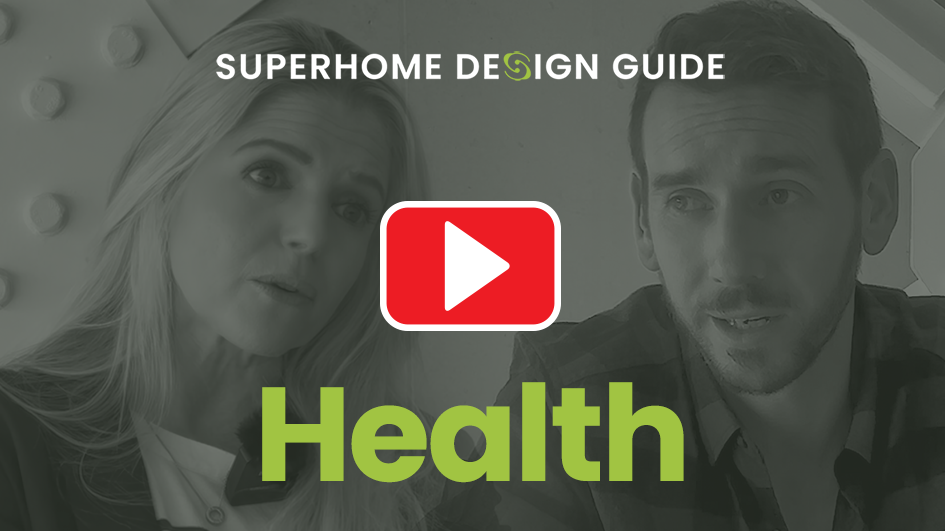
Health
The quality of our homes directly affects the quality of our lives.
The evidence:
There is extensive research both in New Zealand and internationally demonstrating that improved housing results in improved health and wellbeing for the people living in those homes – and that poor housing, with dampness, cold, draughts and mould – results in poor health and more chronic debilitating sickness.
“We know that poor housing conditions result in ill health for many New Zealanders… There is overwhelming evidence that living in poor quality housing is devastating to health and that improving housing conditions can promote good health. New Zealand research has shown how low indoor temperatures and mould impair children’s lung function, that almost 28,000 hospitalisations per year are for diseases potentially attributable to inadequate housing, [and] that exposure to poor housing conditions is associated with increased risk of rheumatic fever.” Elinor Chisholm and team, Public Health Communication Centre, 2019:
SEE MORE
“Almost 1/5 of hospital admissions of young children with acute respiratory infections could be prevented if their houses were free from damp and mould. Māori and Pacific children’s housing sensitive hospitalisation rates are double that of all other ethnic groups. An estimated 40% or 68,000 homes in the Wellington region are mouldy or damp. More than 50% of homes have inadequate roof insulation.”
Wellington Region Healthy Housing Group:
SEE MORE
“Cold, damp homes significantly worsen respiratory conditions such as asthma and COPD (chronic obstructive pulmonary disease) leading to more hospital visits and poorer health outcomes overall. Poor indoor air quality and inadequate heating contribute to respiratory flare-ups, infections, and hospital admissions.” Letitia Harding, Chief Executive, Asthma and Respiratory Foundation NZ, 2025:
SEE MORE
“Children living in cold, damp homes are more likely to be hospitalised for acute respiratory conditions than children living in warm, dry homes.” Philippa Howden-Chapman and team at He Kainga Ora, 2022:
SEE MORE
“Six thousand children are hospitalised each year in New Zealand with housing sensitive conditions, and 86.2% of these children are rehospitalised during childhood.” Nevil Pierse and team, 2020:
SEE MORE
“Shaping the built environment for the next century is too important for the health and wellbeing of our population and our planet to be left to chance… The physics of housing are well known. We know that cold indoor air is likely to contain more moisture: that is, to have a higher relative humidity. A house that is damp is harder to heat. Mould grows better in damp air. Viruses survive for longer on cold surfaces… We know that being cold stresses the immune system and burdens the cardiovascular system.” Philippa Howden-Chapman, 2015, Home Truths: Confronting New Zealand’s Housing Crisis (BWB Texts, Wellington)
The costs:
The health problems caused by sub-standard housing are an ongoing and very significant burden not only for the families coping with such conditions but for the nation, with major costs to our medical infrastructure and services, and the wider societal impacts:
“The health system is spending over $38 million per year treating illnesses linked to cold, damp housing.” Letitia Harding, Chief Executive, Asthma and Respiratory Foundation NZ, 2025:
SEE MORE
“…an Aotearoa BoD [Burden of Disease] study which analysed the considerable costs of poor housing… the estimated indirect cost of deaths and direct public sector costs attributable to these housing conditions was approximately NZ$141 million annually. A total of 229 deaths annually could also be attributable to adverse housing conditions. The costs to society from these deaths were around NZ $1 billion per year.” Philippa Howden-Chapman and team, He Kāinga Oranga, Journal of the Royal Society of NZ, 2024:
GO TO LINK
What could be done better for our housing and health:
The World Health Organisation WHO Housing and health guidelines, produced in 2018, reports that:
“Improving housing conditions can save lives, reduce disease, increase quality of life, reduce poverty [and] help mitigate climate change.”
GO TO LINK
The WHO recommendations include:
Indoor cold and insulation
For countries with temperate or colder climates, 18oC has been proposed as a safe and well-balanced indoor temperature to protect the health of general populations during cold seasons.
In climate zones with a cold season, efficient and safe thermal insulation should be installed in new housing and retrofitted in existing housing.
Indoor heat
In populations exposed to high ambient temperatures, strategies to protect populations from excess indoor heat should be developed and implemented.
Accessibility
Based on the current and projected national prevalence of populations with functional impairments and taking into account trends of ageing, an adequate proportion of the housing stock should be accessible to people with functional impairments.
New Zealand researchers have also assessed the benefits and savings of improving the standards of Kiwi homes:
“Families [in homes with heat pumps installed] reported improved health, comfort and wellbeing, significant reductions in hospital admissions, symptoms of asthma, days off school, lower healthcare utilisation, and fewer visits to a pharmacist.” Philippa Howden-Chapman and team, University of Otago, 2022:
GO TO LINK
“For every $1000 invested in retrofitting insulation and heating, there is over $4000 benefit in health and energy savings.” Wellington Region Healthy Housing Group:
GO TO LINK
The Healthy Homes Initiative,
GO TO LINK
delivers improvements including heating, mechanical ventilation systems and insulation (ceiling and underfloor). A review in 2022 found that, just in the first year, it resulted in:
1533 fewer hospitalisations
9443 fewer general practice visits
8784 fewer filled prescriptions
Philippa Howden-Chapman and team, Journal of the Royal Society of NZ, 2024:
GO TO LINK
A five-year outcomes evaluation of the Healthy Homes Initiative in 2024 found that:
The number of hospitalisations reduced by 18.6% – 10.354 averted hospitalisations per year across 186,016 people
School absences for illness reduced by 5% - 5.309 more days in school per year across 57,626 children
14.121 fewer GP visits per year
Reduced health sector costs of $95.4 million dollars for the first year and a total saving of $398.2 million over the five years reviewed
Benefits exceed to the cost to Health NZ / Te Whatu Ora after one year with a five year return on investment of 507% - for every dollar spent there was $5.07 in health savings over the following five years
Health NZ / Te Whatu Ora, 2024:
GO TO LINK
Personal evidence – the benefits of building better
Two of our Superhome Movement participants (Claire Chatterton and Victoria Mitchell) interviewed for this Design Guide are asthmatic – they both report that they don’t need to use their inhalers since they have been living in a high performing well ventilated home.
“When anyone is sick it does not spread as much as it used to – probably as a result of the heat recovery ventilation system and constant replacement of the indoor air with fresh filtered air.”
Chatterton client, Cashmere
“I feel the air is much cleaner which I think helps with seasonal allergies.” Chattertons client, Halswell
MORE TO FOLLOW...



“It is time that we start building better, we’ve got kids who have got incredibly high numbers of respiratory diseases. You could look at any of the old villas around Christchurch, look at the mould growth in the corner of the GIB, and just realise what a problem we actually currently have, how we need to build better for our future generations.”
Candice Smith: Kingspan Thermakraft

“Mould is a really under-rated as an issue in NZ homes. There's BRANZ data, and data from the Asthma Foundation information on moisture in homes, how it causes mould, what it does to our health... It’s something that can be solved.”
Marcus South: Warmth.nz & Moisture Master (2024)

“People have got to look at the end game, the overall savings in power bills, doctor’s visits or lack of... What is not talked about is the wellbeing, mental wellbeing – if I was living in a mouldy damp house, I’d be getting down, and my work and lifestyle would be affected.”
Dan Saunders: Dan Saunders Construction

“We lived on same site in a 50's bungalow. It was cold and damp. We put in an HRV system, and even just that small adjustment had a huge impact on my health.”
Victoria Mitchell: Statement Homes

“Changing a person’s life through architecture and design – some of it's overt, it’s a beautiful home, a wonderful space to be in. Other things are a bit more subtle, in that you’re breathing fresh filtered air 24/7 no matter what the temperature or the outdoor environment is... you’re living in a constant temperature band rather than big peaks and troughs, and your health outcomes will be better and you didn’t realise it.”
Tony Biesiek: Imagine Architecture
